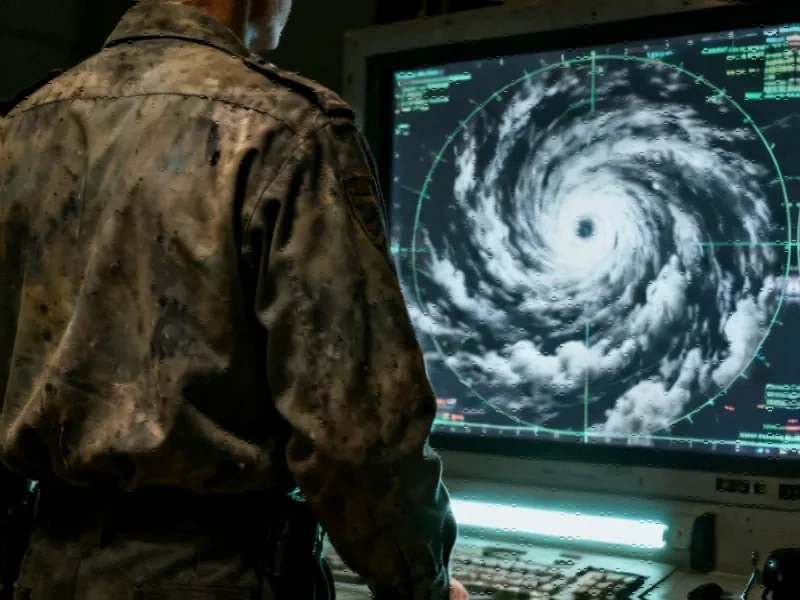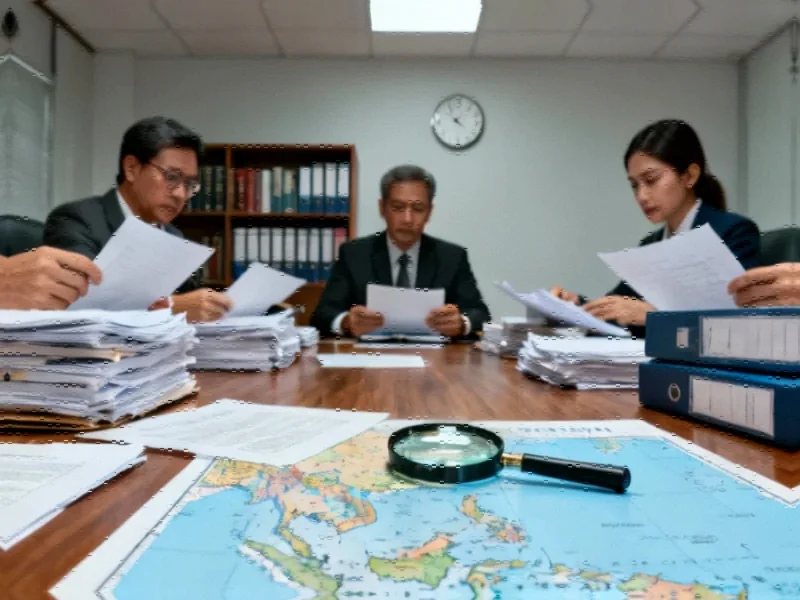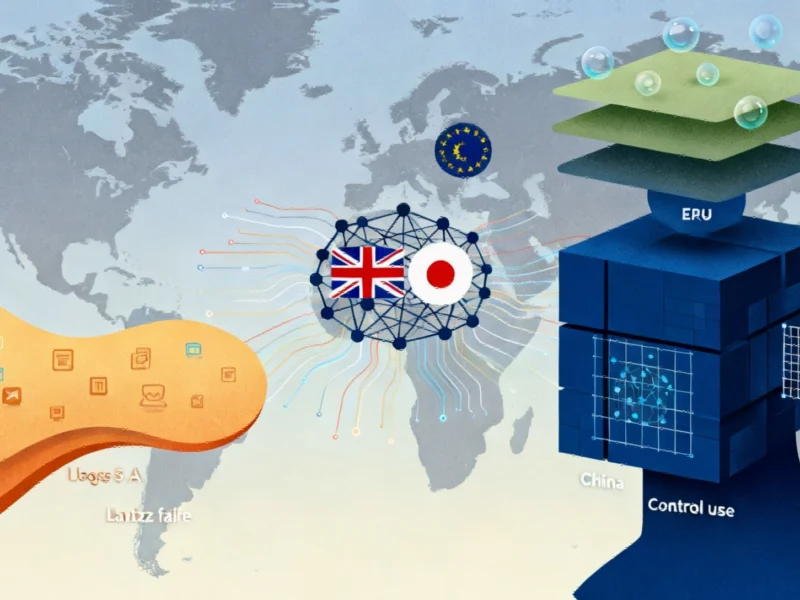TITLE: How Climate Science Censorship Undermines Industrial and Economic Stability
The Human Toll of Scientific Austerity
At 73, Frank Marks represents both the dedication and vulnerability within America’s scientific infrastructure. The veteran hurricane hunter emerged from retirement to address critical staffing shortages at the National Oceanic and Atmospheric Administration, where he previously directed hurricane research for 45 years. His voluntary return highlights a disturbing trend: experienced professionals compensating for systemic deficiencies in climate science capacity.
“They can’t do all the things they were going to do,” Marks observes about his former colleagues. “They have to focus on what they can do and they’re struggling at that.” This struggle manifests across NOAA, where approximately 2,000 positions have been eliminated through probationary employee purges, hiring freezes, and early retirement incentives.
Systematic Dismantling of Climate Infrastructure
Since the beginning of Donald Trump’s second term, the administration has executed a coordinated campaign against climate science institutions. The Environmental Data and Governance Initiative documents hundreds of federal websites scrubbing climate-related content, with over one hundred completely removed. Dozens of critical datasets—from earthquake intensity to billion-dollar climate disasters—have been decommissioned.
The White House’s proposed $1.6 billion cut to NOAA’s 2026 budget represents a 26% year-on-year decrease, while the administration’s rhetoric has escalated. Trump recently labeled climate change the “greatest con job ever perpetrated on the world” at the UN General Assembly, echoing language from the Heritage Foundation’s Project 2025 report that recommends dismantling NOAA entirely.
Operational Consequences Across Industries
The staffing crisis has tangible impacts on daily operations. Weather balloon launches, essential for atmospheric data collection, have declined from 170 daily observations in January to 155 in April. Multiple stations have suspended launches temporarily or indefinitely, including a critical site in western Alaska.
Tom Fahy, legislative director for the National Weather Service union, warns of dangerous understaffing: “Two stations, one in California and another in the Midwest, have less than half the number of meteorologists needed. People are overworked.” Special centers advising air traffic controllers on severe weather face similar shortages, creating “quite a safety risk.”
These developments coincide with broader industry developments where geopolitical factors influence technological sectors.
Economic and Safety Implications
The consequences extend far beyond scientific research. Robert Atlas, former director of the Atlantic Oceanographic and Meteorological Laboratory, estimates that eliminating NOAA’s research arm would reduce hurricane forecast accuracy by 20-40%. “The cost to the economy could be 20 to 50 times as large as the savings,” he calculates, noting that forecasting improvements since 2007 save approximately $2 billion per hurricane.
Accurate weather predictions are crucial for multiple sectors. Agriculture relies on seasonal forecasts for planting decisions, while insurance companies use climate data for risk assessment and pricing. Fisheries management depends on ocean temperature data and algal bloom detection—capabilities threatened by proposed satellite program cuts.
These challenges emerge alongside market trends affecting global technology and industrial sectors.
Global Ripple Effects
International weather agencies express growing concern about American withdrawal from global climate collaborations. “If you want to forecast the weather more than a day or so ahead, you need observations at the continental scale,” explains Anthony Rea, an Australia-based meteorological consultant. “If you want to go beyond three days, you really need observations over the entire planet.”
European forecasting centers already feel the impact. “Any loss of observations is tragic for us,” says Florian Pappenberger of the European Centre for Medium-Range Weather Forecasts. “The moment you don’t observe something it’s very difficult to go back and reobserve because it’s gone.”
This situation parallels related innovations in strategic planning across defense and technology sectors.
Critical Programs in Jeopardy
The administration’s budget proposal targets fundamental research programs, including cooperative institutes with 80 universities, flash flood and tornado early-warning systems, and greenhouse gas monitoring stations. The renowned Keeling Curve measurement site in Hawaii, which has tracked rising atmospheric CO2 since 1958, faces defunding.
Next-generation NOAA satellites designed to collect air quality data and monitor ocean color would be scrapped, with the White House dismissing them as “designed primarily for unnecessary climate measurements.” Meanwhile, the Argo program—a global fleet of ocean floats that measure temperature for weather modeling—suffered an unprecedented 15% funding cut this year.
These scientific challenges intersect with recent technology advancements that could potentially help mitigate data collection gaps.
Broader Industrial Implications
The campaign against climate science occurs within a context of shifting global economic relationships. As industry developments demonstrate, antitrust actions and regulatory changes create complex environments for multinational corporations.
Similarly, market trends in China show how national priorities influence global economic patterns, much as climate policy decisions create ripple effects across international boundaries.
Most significantly, federal climate science faces unprecedented cuts that threaten not only environmental monitoring but industrial planning and risk management capabilities worldwide. The systematic dismantling of climate research infrastructure represents a fundamental threat to data-driven decision-making across multiple sectors, from agriculture and insurance to disaster management and international shipping.
An Uncertain Forecast
As Congress debates spending plans amid government shutdown threats, the future of America’s climate science capability remains uncertain. What is clear is that the consequences of censoring climate science and defunding research extend far beyond academic circles, affecting economic stability, public safety, and global environmental monitoring networks.
The expertise gap created by staff reductions may take decades to repair, while the loss of observational data creates permanent gaps in our understanding of climate patterns. As one NOAA employee in fisheries management lamented: “It’s frustrating to be constantly asked to work hard and fast to compensate for terrible management decisions.” This sentiment echoes across industries that depend on reliable climate intelligence for operational planning and risk mitigation.
This article aggregates information from publicly available sources. All trademarks and copyrights belong to their respective owners.
Note: Featured image is for illustrative purposes only and does not represent any specific product, service, or entity mentioned in this article.



